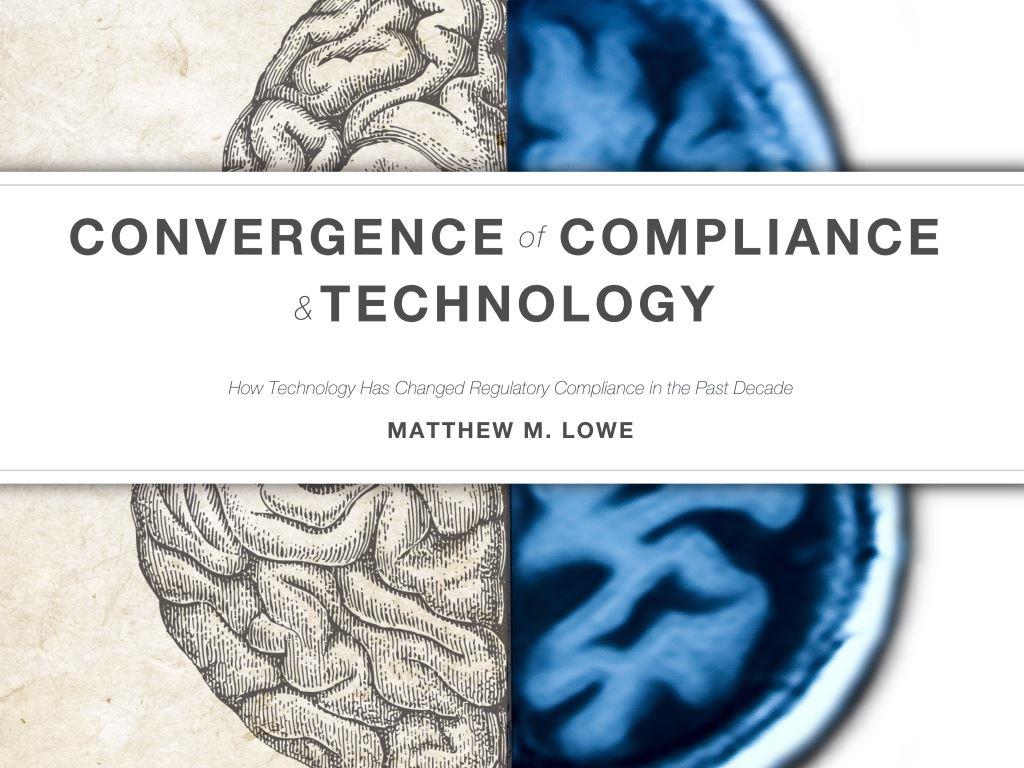Imagine a pacemaker the size of a vitamin pill. It’s so small it can be delivered directly to a patient’s heart through a catheter. Earlier this year, the FDA approved such a device as an alternative to the conventional pacemaker minus cardiac wires and possible complications.2
Breakthroughs like this happen, thanks in large part to faster and more efficient, technology-driven clinical trials and approval processes. Ours is a time of faster and more effective regulatory submissions and adverse-event reporting. In the past 15 years, technology has helped both regulated companies and regulatory bodies advance society’s ability to deliver life-changing medical products throughout the world.3

Technology has helped speed up regulatory submissions and adverse-event reporting. (Credit: Matthew M. Lowe).
I feel very fortunate to be part of this technology movement. If you work in the life science industry, the FDA and similar agencies, or the compliance technology sector, then you’re part of this movement.
In part two of this series, I discussed the role of 21 CFR Part 11 in this movement, and how it galvanized companies to automate quality processes. In addition to Part 11, there were more than a dozen initiatives and regulations that helped propel life science compliance to the electronic age.
Important Compliance Milestones
When we talk about historical milestones, the question we usually ask is, “Where were you when the event took place?” In the context of regulatory compliance, I will add, “What was your job back then and how did the event affect it?”
The following laws and initiatives helped shape the rapid modernization of regulatory compliance like never before. If you’ve been with the life science industry long enough, these milestones might take you down the memory lane of your career. I hope these events are associated with good memories!
2000: The National Library of Medicine (NLM), which is part of the National Institutes of Health, launched ClinicalTrials.gov, a database that provides easy public access to information about clinical trials. It’s an offshoot of a federal law that required a registry of clinical trials for medicines.
2003: The FDA issued the second guidance for 21 CFR Part 11, which took effect in August 1997. Part 11 is meant to allow the widest possible use of electronic technology for FDA submissions and compliance purposes.
2004: PhRMA (Pharmaceutical Research and Manufacturers of America) issued SAFE (Signatures and Authentication for Everyone) digital signature standard for the pharmaceutical, biotech, and health care industries worldwide. It is intended to encourage the use of digital signatures as part of an electronic environment within the industry.
2007: Congress passed the FDA Amendments Act expanding ClinicalTrials.gov submission requirements.
2007: The FDA enforced SPL (structured product labeling), a Health Level 7 (HL7) international standard that defines the content of drug prescriptions in XML format to make the information accessible and readable.
2008: The FDA launched the Sentinel Initiative, a national electronic system designed to track the safety of drugs, medical devices, and biologics once they reach the market. The project will be implemented in stages. As of this year, the FDA has implemented a mini-Sentinel.

Initiatives such as the Sentinel and the UDI system are meant to track the safety of medical products after they are introduced to the market. (Credit: Matthew M. Lowe).
2008: In the pharmaceutical industry, the electronic common technical document (eCTD) became the standard for electronic submission to the FDA’s Center for Drug Evaluation and Research (CDER) and the Center for Biologics Evaluation and Research (CBER). Drafted under the auspices of the International Conference for Harmonisation (ICH), the eCTD specifies how electronic submissions should be created, reviewed, and archived.
2010: The Physician Payments Sunshine Act was passed requiring drug and medical device manufacturers that participate in U.S. federal health care programs to report payments and items of value they give to doctors and providers. The reporting is done electronically through the Open Payments Program.
2011: The FDA introduced the Innovation Pathway pilot, a priority review program for pioneering medical devices. Under this program, the FDA could conduct premarket reviews within 150 days of submission, about half the time of approval for non-priority products.
2012: Congress created a new category of “breakthrough therapy” in the FDA Safety and Innovation Act, which became law in July 2012. The breakthrough pathway is an expedited process of review and approval of new drugs for life-threatening illnesses. This pathway is in addition to three other expedited approval processes already in place: priority review designation (1992), fast track designation (1997), and accelerated approval (1997).
2013: The FDA released a final rule establishing a unique device identification (UDI) system that will identify medical devices through distribution and use. A UDI is a unique numeric or alphanumeric code.
2014: The FDA required device manufacturers and importers to submit mandatory reports of adverse events electronically (known as eMDR).
2014: The FDA’s 510(k) eSubmissions Pilot Program offers a pathway for the construction and submission of a pre-market notification application electronically without the requirement of a hard copy or a compact disk. It’s sometimes called “turbo 510(k)” because it’s similar to the Turbo Tax® electronic process for taxpayers.
2015: The FDA finalized its guidance that required most eCTD submissions to be submitted electronically, including new drug applications (NDAs), biologic license applications (BLAs), and investigational new drug applications (INDs).
2015: The FDA’s Adverse Reporting System/MedWatch required that applicants electronically submit all MDRs, MDR attachments, and periodic safety reports.
2015: The FDA’s Center for Devices and Radiological Health (CDRH), Offices of Device Evaluation (ODE) and In Vitro Diagnostics and Radiation (OIR) participated in the International Medical Device Regulators Forum’s (IMDRF) Regulated Product Submission (RPS) Pilot Program. The FDA’s goal is to implement a standards-based fully electronic receipt, review, dissemination, and archival environment. The RPS program is meant to harmonize electronic submission methods for pharmaceutical and medical device industries.
Technology has been good for compliance and will continue to play a pivotal role in the future. I would like to think that things will get even more efficient in the future. In part four of this series of articles, I will discuss what life science regulations would look like in the future and how best to prepare for them. In particular, I will present five forecasts based on current developments.
To get a better perspective of our discussion about technology and compliance, read the first part and the second part of this series.

The author’s e-book examines how technology facilitated the evolution of regulatory compliance in the life science industry. (Credit: Matthew m. Lowe).
Matthew M. Lowe, executive vice president at MasterControl, is the author of “Convergence of Compliance and Technology: How Technology Has Changed Regulatory Compliance in the Past Decade.” He is a mechanical engineer with over a dozen years of medical device experience in product development, product management, and regulatory compliance. He has successfully launched more than a dozen medical devices and has five patents issued. His regulatory compliance experience includes writing a 510(k) that was cleared by the FDA and managing a multisite, multiyear postmarket clinical study for orthopedic devices.
References:
(1) MasterControl provides software and comprehensive services (quality and compliance consulting, education and training, validation, implementation and project management, technical support, and configuration) to regulated companies worldwide. The company, based in Salt Lake City, Utah, has offices in Europe and Asia, www.mastercontrol.com
(2) Recently Approved Devices: Micra Transcatheter Pacemaker System – P150033. From the FDA website, http://www.fda.gov/MedicalDevices/ProductsandMedicalProcedures/DeviceApprovalsandClearances/Recently-ApprovedDevices/ucm494390.htm
“FDA Approves World’s Smallest Pacemaker for U.S. Patients,” April 7, 2016, Heart Failure Society of America, http://www.hfsa.org/fda-approves-worlds-smallest-pacemaker/
(3) The author discusses the subject further in his book, “Convergence of Compliance and Technology: How Technology Has Changed Regulatory Compliance in the Past Decade.” Get a complimentary copy at, http://www.mastercontrol.com/ebook/convergence.html?source=pr-sb5


